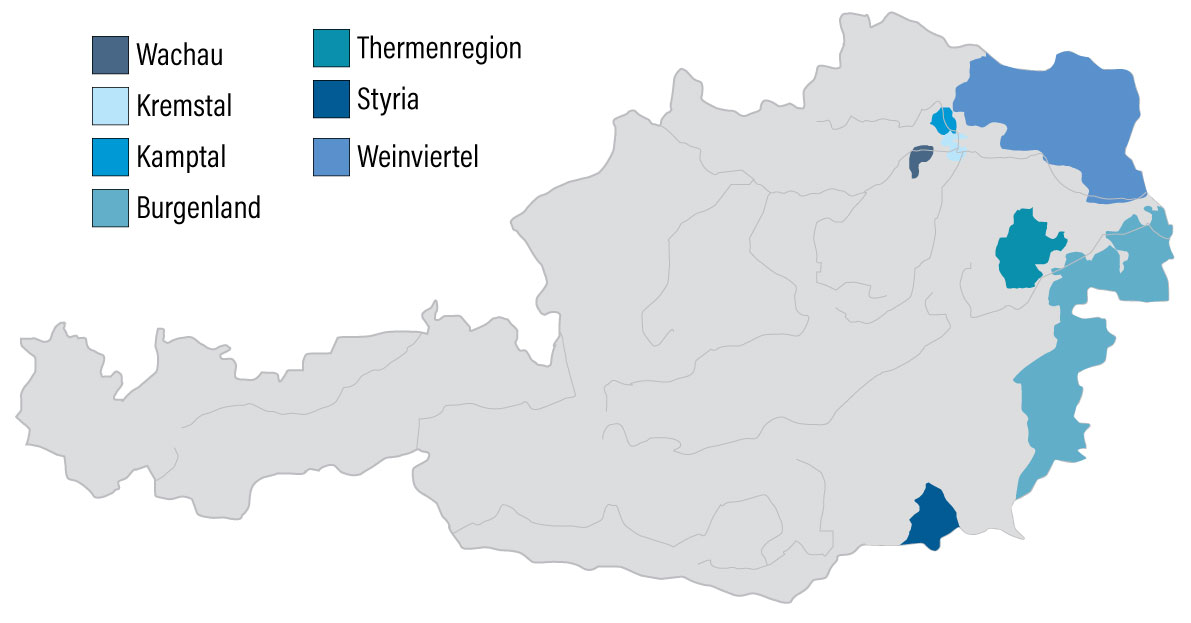 There is archeological evidence of grape growing in Traisental 4000 years ago, grape seeds have been found in urns dating back 700 BC in Zagersdorf.
There is archeological evidence of grape growing in Traisental 4000 years ago, grape seeds have been found in urns dating back 700 BC in Zagersdorf.
Viticulture suffered from the invasions of Bavarians, Slavs and Avars after the fall of the Roman Empire, but from 788 the rule of Charlemagne saw the considerable reconstruction of vineyards and introduction of new grape presses.
Today Austria has 126.550 acres of vineyards, most all of it in the East of the country.
77648 acres in the Lower Austria region and 38020 acres in the region of Burgenland what makes Wine Country of Austria.
The most important regions are Wachau, Kremstal, Kamptal, Burgenland, Weinviertel, Thermenregion and Styria.
The most important grape is Gruener Veltliner with 36% other varieties are Zweigelt, Welschriesling, Chardonnay, Pinot Blanc, Blaufraenkisch and Mueller-Thurgau.
